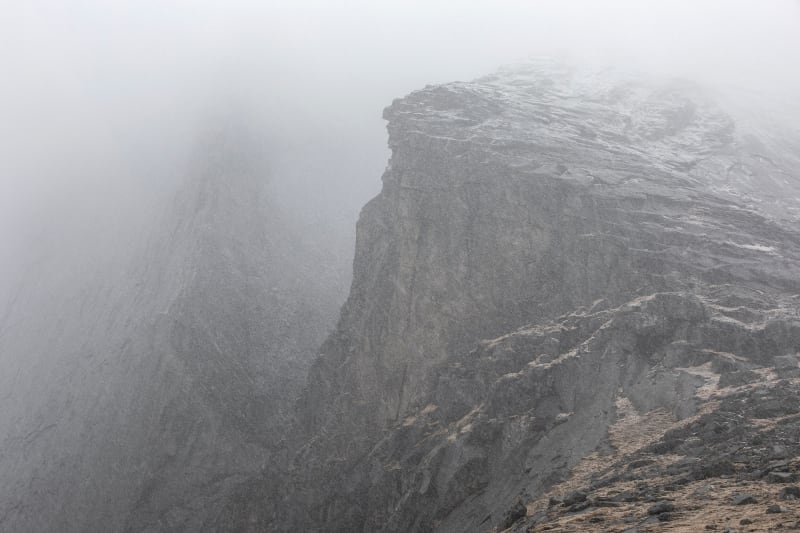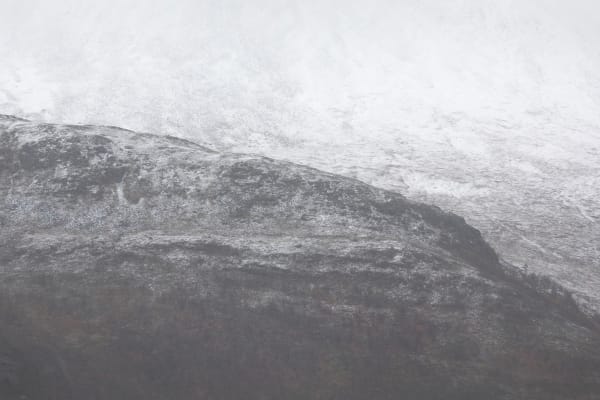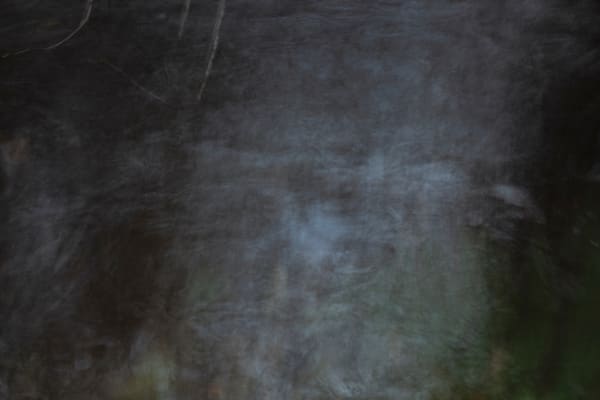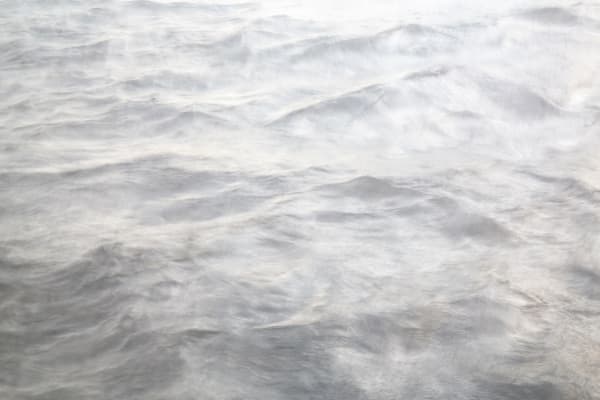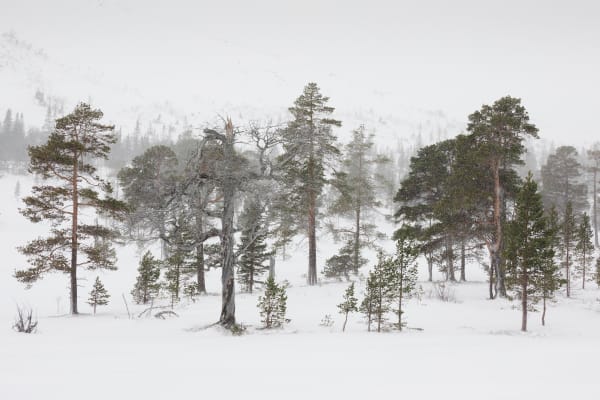Karin Alfredsson Swedish, b. 1966
Overview
Karin Alfredsson was born in 1966 on Frösön in Jämtland (Sweden) and has lived and worked in Stockholm since 1989. She is represented at Moderna Museet, the National Art Council, Stockholm Art, and a dozen other institutions and has exhibited in a wide range of galleries and art galleries around Sweden. In 2019, she was awarded the Liljevalch and San Michele Foundation's newly established Capri Scholarship. Galerie Leu has presented her first exhibition in Germany.
Works
-
 Karin AlfredssonSnow and rain shall pass
Karin AlfredssonSnow and rain shall pass -
 Karin AlfredssonSnow and rain shall pass, 2014
Karin AlfredssonSnow and rain shall pass, 2014 -
 Karin AlfredssonSnow and rain shall pass, 2014
Karin AlfredssonSnow and rain shall pass, 2014 -
 Karin AlfredssonSnow and rain shall pass, 2018
Karin AlfredssonSnow and rain shall pass, 2018 -
 Karin AlfredssonSnow and rain shall pass, 2018
Karin AlfredssonSnow and rain shall pass, 2018 -
 Karin AlfredssonSnow and rain shall pass, 2018
Karin AlfredssonSnow and rain shall pass, 2018 -
 Karin AlfredssonSnow and rain shall pass, 2020
Karin AlfredssonSnow and rain shall pass, 2020 -
 Karin AlfredssonSnow and rain shall pass, 2020
Karin AlfredssonSnow and rain shall pass, 2020 -
 Karin AlfredssonSnow and rain shall pass, 2022
Karin AlfredssonSnow and rain shall pass, 2022 -
 Karin AlfredssonSnow and rain shall pass, 2022
Karin AlfredssonSnow and rain shall pass, 2022 -
 Karin AlfredssonSnow and rain shall pass, 2022
Karin AlfredssonSnow and rain shall pass, 2022 -
 Karin AlfredssonSnow and rain shall pass, 2022
Karin AlfredssonSnow and rain shall pass, 2022 -
 Karin AlfredssonSnow and rain shall pass, 2022
Karin AlfredssonSnow and rain shall pass, 2022 -
 Karin AlfredssonSnow and rain shall pass, 2022
Karin AlfredssonSnow and rain shall pass, 2022 -
 Karin AlfredssonSnow and rain shall pass, 2022
Karin AlfredssonSnow and rain shall pass, 2022 -
 Karin AlfredssonSnow and rain shall pass, 2022
Karin AlfredssonSnow and rain shall pass, 2022
Biography
Karin Alfredsson is an artist and photographer who first gained recognition for her compelling portraiture. Yet, in a radical turn, she abandoned her human subjects entirely to devote herself to her original and deepest passion: nature. Her stark, unflinching images of barren northern landscapes have led critics to draw comparisons not to other photographers, but to painters such as Caspar David Friedrich, J.M.W. Turner, August Strindberg, and Gerhard Richter. Many of her works indeed resemble photorealistic paintings or finely rendered drawings. But unlike, for example, Robert Longo—whose monumental charcoal drawings are projected from photographs—Alfredsson uses no template. She captures those rare, fleeting moments when nature itself appears to be doing the painting. What we see in her work is unmanipulated—raw, immediate, and pure.
“I work very slowly, intuitively, returning to the same place over and over to truly get to know it,” Alfredsson explains. “My goal is not to depict beauty, but to reach what lies beyond it—that which is profound, that simply is.” It is this process that imbues her photographs with such emotional gravity. Her practice is less about documenting the landscape than becoming immersed in it. In looking closely at her images, one can sense the quiet time spent, the communion with the place, and the depth of attention that precedes each click of the shutter.
“Nature is superior to everything,” she says. “It’s the only thing that truly interests me—beyond words. I am completely uninterested in what is conventionally beautiful, in the polished or ornamental. I want to go beyond that, to find the place where I can become part of nature itself. Once found, one never wants to leave. We rise and fall with nature. It’s about respect. And humility. It may sound religious, but it is not—it’s simply where I feel most alive.”
Alfredsson began this deep engagement with the natural world about a decade ago, setting out without direction into remote wilderness. Sometimes she took photographs; often, she simply observed. Her method remains unchanged: she works alone, in a tent, through autumn, winter, and spring—waiting, for days or even weeks, for that one instant of perfect light, stillness, and movement.
Everything that could be described as “postcard beautiful” is deliberately excluded. Flowers decay. People vanish. Lush vegetation and bright colors are absent. And yet, all of Alfredsson’s photographs and films are captured in color. They are taken during the seasons when color is more idea than reality, and the daylight itself feels monochrome. The palette is reduced to a range of greys, from deepest black to the iciest white. The result is a powerful paradox: while the softened grayscale tones temper the harshness of her subject matter, they simultaneously amplify its vastness, its stark grandeur.
Exhibitions
-

Resonant Surface
The Intersection of Light, Color, and Space 5 Dec 2024 - 1 Feb 2025Opening December 5, 5-8 PM MARKUS ÅKESSON, KARIN ALFREDSSON, BERNARD AUBERTIN, GEORG BASELITZ, AGOSTINO BONALUMI, YLVA CARLGREN, PETER DOIG, DITTE EJLERSKOV, GOTTHARD GRAUBNER, RONI HORN, ÅSA JUNGNELIUS, IMI KNOEBEL, TOMAS...Read more -

Winter Show
Full House 30 Nov 2023 - 31 Jan 2024Works by Günther Förg Otto Piene Ylva Carlgren Martin Wickström Tom Wesselmann Imi Knoebel Tomas Lundgren Paolo Scheggi Maria Miesenberger Agostino Bonalumi Michael van Ofen Bernard Aubertin Jean-Luc Moerman Florian...Read more -

Karin Alfredsson
Snow and rain shall pass 11 Mar - 18 Apr 2022Nordic landscape photographyRead more
